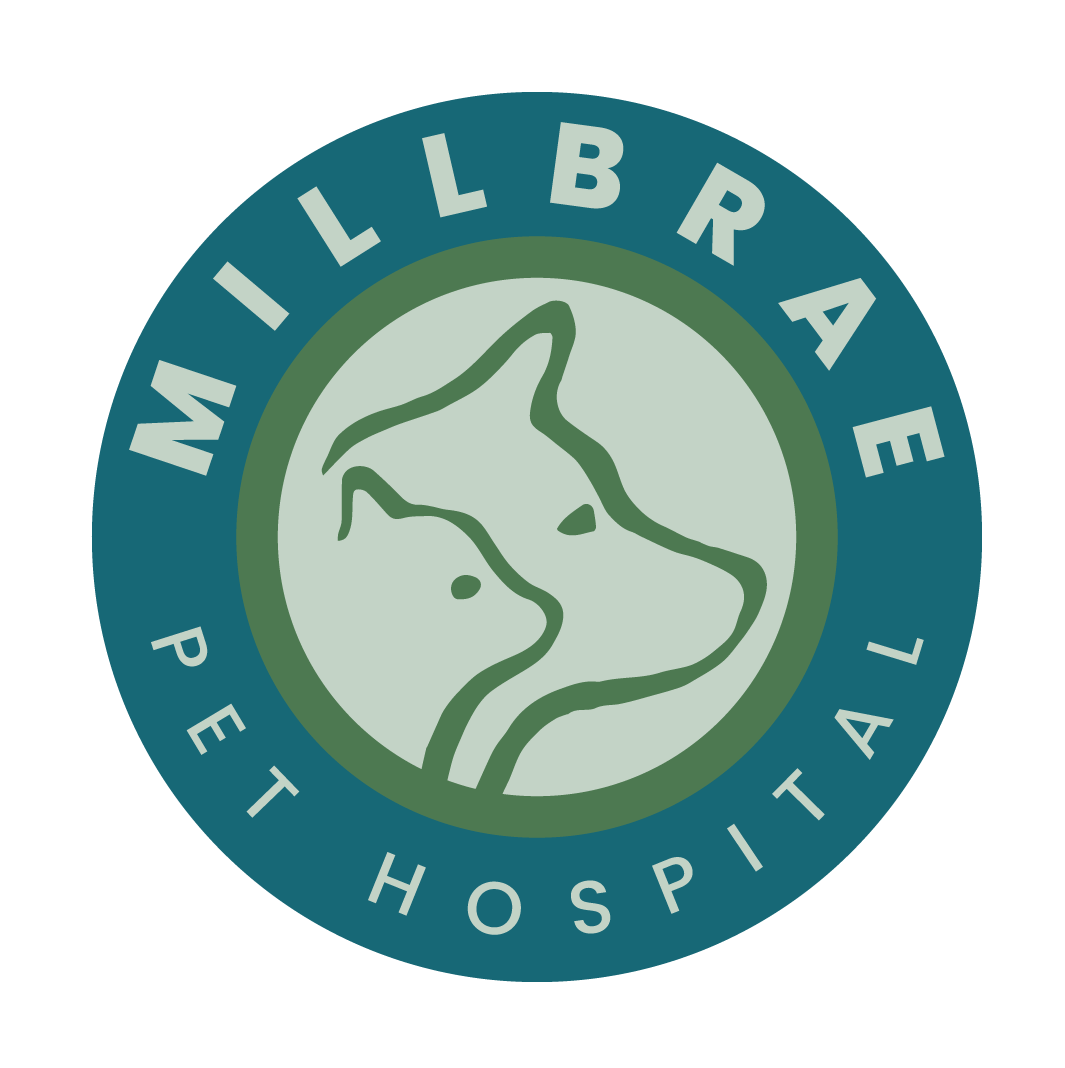Veterinary emergencies are not always easy to recognize, despite requiring immediate action, often not only to treat a pet and alleviate their pain, but also to possibly save their life. Learn the signs of the following nine common critical conditions in pets that mean you must contact Millbrae Hospital without delay.
- Bloat or gastric dilatation and volvulus (GDV) — The classic signs for bloat or GDV are a distended abdomen, with or without repeated, unproductive retching. Both conditions require immediate veterinary care, and often surgery. Bloated pets have excess air or food trapped in their stomachs, resulting in pain, obstruction, difficulty breathing, and shock. Bloat frequently progresses to GDV, a rapidly fatal condition in which the stomach twists on itself. If your pet’s abdomen seems inflated or firm, or if they are trying to vomit but bringing up only fluid, call us immediately for help.
- Difficulty breathing — Respiratory emergencies are indisputably life and death situations, and recognizing your pet’s respiratory distress is critical. An animal struggling to breathe typically extends their neck and opens their mouth. In cats, open-mouthed breathing always indicates a respiratory emergency. Abnormal breathing may require increased effort to inhale and exhale, evidenced by increased chest movement and use of the abdominal muscles. A pet who desperately needs oxygen will have gray, white, or bluish gums rather than their normal pink. They may also wheeze loudly, make honking noises, or collapse.
- Toxin ingestion — Multiple household foods and other items, from raisins to household cleaners, are dangerous if eaten by pets. If you believe your furry friend ate something they shouldn’t, or if you’re unsure if what they ate was toxic, call us or Animal Poison Control without delay. If you find a chewed, empty pill bottle or a destroyed trash container, call us immediately to discuss next steps, rather than wait for signs to appear. Signs that your pet has eaten something toxic depend on the toxin, but generally include drooling, vomiting, diarrhea, excessive panting, and shaking. Some toxins can lead to liver or kidney failure, or death, so ingestion definitely constitutes an emergency.
- Urinary and fecal obstructions — A cat who is repeatedly going in and out of the litter box, or hiding in the litter box without producing urine or feces, should be seen at an emergency clinic immediately. Urinary and fecal obstructions are not only painful, but also life-threatening. A dog with an obstruction will posture as if they need to eliminate, but without effect. Don’t delay in contacting us if you see these problems.
- Traumatic injuries — Obvious injuries such as open wounds, excessive bleeding, or broken bones need veterinary care quickly. However, severe trauma isn’t always apparent—for example, you may see only minor puncture wounds on a cat or dog attacked by a larger animal, but they actually sustained severe internal injuries. Similarly, a pet hit by a car may initially appear uninjured, but be experiencing internal hemorrhage, a ruptured bladder, or a fractured pelvis. If your pet has suffered physical trauma, they should be evaluated for internal injuries at a veterinary emergency clinic as soon as possible.
- Eye injury or disease — An eye that is bulging, tearing, or cloudy, or a closed eye that your pet won’t open requires examination by a veterinarian as soon as possible. In addition to causing significant pain, eye diseases can rapidly lead to vision loss and blindness.
- Seizures — Bring a pet whom you believe is seizuring to a veterinary hospital right away. The longer a seizure lasts and the more frequently they occur, the more likely your pet will sustain permanent neurologic damage. Veterinarians can usually help a seizuring pet, and many drugs are available for long-term seizure management. A pet who is seizuring will display jerky body movements, stiffening, muscle twitching, drooling, foaming at the mouth, and sometimes involuntary urinating and defecating.
- Severe pain— Painful pets will constantly whimper, sometimes loudly, sit in a hunched position, hide, and shake. If your pet seems at all uncomfortable, trust your instincts, and don’t wait to get help. We can alleviate your pet’s pain in the hospital, and perform the necessary diagnostics to determine the underlying cause. Never treat your pet’s pain yourself with human medications.
- Hind-leg paralysis — Intervertebral disc disease (IVDD) causes spinal nerve compression, leading to hind-leg weakness or paralysis. Some dog breeds, including dachshunds, beagles, shih tzus, and corgis, are predisposed to IVDD, although any dog breed can be affected. If you notice your pet dragging their hind legs, contact us immediately, because IVDD requires rapid treatment to prevent permanent paralysis. Cats can develop a condition called saddle block thrombus that causes hind-leg weakness and paralysis when a blood clot lodges in the iliac arteries that supply blood to the back legs. This condition is exceptionally painful, and the cat needs urgent care.
Our Millbrae Hospital team hopes your pet never experiences a life-threatening emergency, but should one occur, contact us, or bring them to us immediately. We will do everything we can to help alleviate their pain and your distress. If trouble occurs after hours, head to Animal Internal Medicine and Specialty Services in San Francisco (AIMMS SF) for immediate help.

